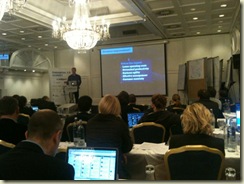 Lee Bryant closed the Enterprise 2.0 Summit with a talk about Social Business.
Lee Bryant closed the Enterprise 2.0 Summit with a talk about Social Business.
Where's Enterprise 2.0 headed next? It's in the direction of providing real business value.
Enterprise 2.0 has been adopted at least a bit by most organizations. There's a nice spread of use cases, showed by research supported by Headshift.
Lee sees Enterprise 2.0 as a Trojan mice for organizational change. Small but impressive changes to the organization.
Enterprise 2.0 is still in the early phase, patchy and tool-centric (like the KM wave was in the beginning).
We're looking for quantifiable business improvements, like:
- lower operational costs
- networked productivity
- business agility
- effective management (move away from information hostages: businesses run by writing and moving report up and down the ladder)
- customer centricity (Listen! But many companies lack a structure to socialize what you're learned by listening)
Where is business practice going wrong?
- people, outdated view of motivation, behavior. Do we trust them. Trust is cheaper than control. We still have no real understanding of viral behavior inside organizations.
- process, an expensive way to orchestrate activity
- technology, a critique of the IT function. Businesses are spending lots of time on very basic stuff, like ERP/CRM. Light-weight processes with tools so employees can get things done. We used to believe that huge automation would lead to huge productivity improvements, which it did not.
What have we learned that can help here?
- human behavior, spread of influence in networks
- aggregation, flow, network effects, force multipliers
- open, collaborative working contexts
- designing for emergence and evolution
Moving beyond e2.0 adoption:
- social business program
- platform thinking for underlying capabilities (shows a really interesting picture of how this platform adds up technically)
- this will lead to an app store for every enterprise
- use cases and local, situated software
- e.g. better coping tools for information overload
Now he moves over to sharing open data to change behavior. Now the processes to send data up and down the organization is not real-time and not open. If it would be, every employee could change their behavior in increments.
Another future trends is social experience design: energizing networks. Lots of measuring and monitoring and changing on the fly. This could give you loads of information about the amount of engagement there is.
Finally, there are new opportunities for leadership. Leadership is not obsolete, but it will change. Or E2.0 helps business leaders to reach out. Intimacy at scale.
This can create meaningful change in organizations. It's not a full-frontal battle, or it shouldn't be. But it should weave in with the existing networks and structures. From biology we know we only need 5% to create flock!
Great end to the Enterprise 2.0 Summit!

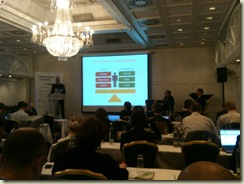 Oscar Berg
Oscar Berg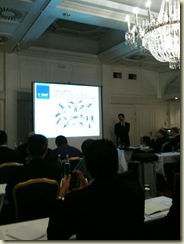 CheeChin Liew
CheeChin Liew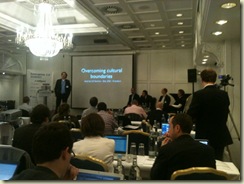
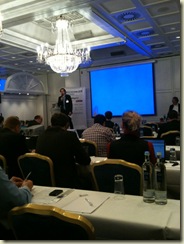
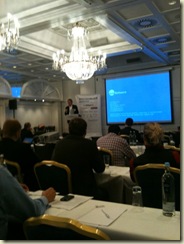
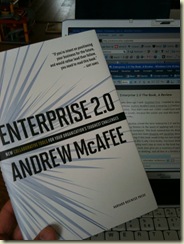
 Really looking forward to the Enterprise 2.0 Summit in Frankfurt! It's going to be great to listen to all kinds of talks, from experts and practitioners in the Enterprise 2.0 field. I'll also be giving a talk,
Really looking forward to the Enterprise 2.0 Summit in Frankfurt! It's going to be great to listen to all kinds of talks, from experts and practitioners in the Enterprise 2.0 field. I'll also be giving a talk, 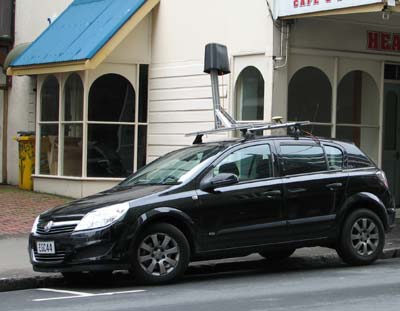 It wasn't too long ago I wondered if there would be another DARPA Grand Challenge. I wondered because the Challenges
It wasn't too long ago I wondered if there would be another DARPA Grand Challenge. I wondered because the Challenges 
